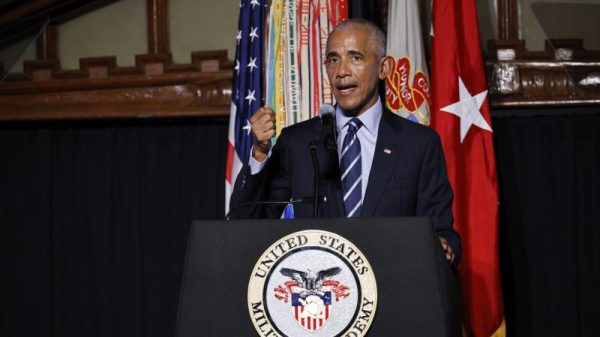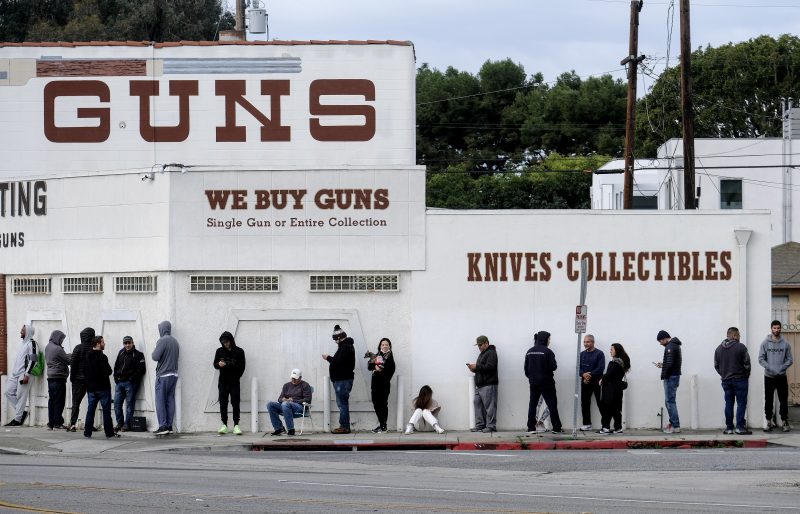There’s no real question that a central reason the United States has so many firearm deaths is that the United States has so many firearms. What question there is, instead, centers on that latter point: How many guns are there in this country?
Knowing that answer concretely wouldn’t have much of an effect on gun deaths in the United States. But that it is perhaps incalculably high — and rising — reinforces the political challenge faced by those hoping to reduce American gun deaths. For the foreseeable future, there are simply far too many guns already in civilian hands to imagine a scenario in which those seeking a weapon to hurt themselves or others find it difficult to do so.
While there are no hard counts of the number of firearms in the country — in part because pro-gun advocacy organizations are wary of having the government know where guns might be found — there are estimates. One, from Switzerland-based Small Arms Survey, figures that there are 120.5 civilian-owned guns for every 100 U.S. residents. That’s nearly twice the ratio as seen in the second-ranked region, the Falkland Islands, and more than twice the ratio seen in Yemen, which comes in third.
A 2012 report from the Congressional Research Service (CRS) put concrete figures on its estimates. In 1994, it reported, there were about 192 million civilian-owned firearms in the United States. By 2009, that had jumped to 310 million.
By now, that estimate is more than a decade old. Since then, we’ve seen multiple surges in gun purchasing as reflected in requests made from gun dealers to the FBI’s National Instant Criminal Background Check System. Some of those background-check requests are for concealed-carry permits or other non-purchase-related queries. But most are made by gun stores when buyers come in to purchase a weapon.
Since November 2012, the month that the CRS report was published, there have been nearly 291 million background check requests made to the FBI. In the pandemic years of 2020 and 2021 there were 78.6 million alone.
From the early 1970s until the early 1990s, the rate of gun ownership in the United States was falling. That was true among both Democrats and Republicans, according to data from the national General Social Survey (GSS). (The figures below include independents who align with a political party.) But since the early 2000s, the overall decline has stalled, with Republicans being slightly more likely to report owning guns and Democrats slightly less likely to.
How do we reconcile a decline in gun ownership with an increase in owned guns? Simple: Many gun owners now own multiple guns. The GSS asks people to identify what type of guns they own, allowing us to determine the percentage of gun owners who own more than one type. In the first three years for which GSS data are available, about 49 percent of gun owners reported owning a firearm from more than one category (pistol, rifle, shotgun). In the most recent three GSS surveys, that percentage rose to nearly 60 percent.
It has always been more common for residents of rural areas to report owning a gun than for residents of more urban areas. Rural residents are more likely to have a gun for protection or for hunting.
Even here, though, we see the effects of the partisan divide on gun ownership. In the most recent GSS, urban Republicans were about as likely as rural Democrats to report owning a gun.
Partisan politics heavily infects both gun ownership and the response to gun ownership, of course. The National Rifle Association’s effort to argue that the best antidote to gun violence is an armed response has become a central tenet of Republican politics. On Monday, The Washington Post published a lengthy look at how the AR-15 became a central part of the political discussion about gun ownership and how it became a talisman of pro-gun advocacy.
It is estimated that there are 20 million AR-15-style rifles in the United States at this point — a powerful, deadly type of weapon that was restricted as a consumer product two decades ago.
There have been proposals aimed at reducing that figure. As part of his short-lived 2020 presidential candidacy, former Texas congressman Beto O’Rourke (D) proposed buying back assault-style weapons like the AR-15. Even if that were fully successful, of course, there would likely still be some 300 million firearms in the United States, according to that 2012 CRS report. Many of the deadliest firearms would be gone, but hundreds of millions of more would remain.
If significantly reducing gun deaths necessarily means significantly reducing firearm ownership, you can see the problem. It’s hard to think of a way that ownership could be reduced significantly, even if the political will to do so suddenly materialized.
There are far more American guns than there are Americans.
This article originally stated that the AR-15 was not available as a consumer product in 2003 because of the federal ban on assault weapons. Some forms of the weapon were available under the ban, but sales surged once the ban was lifted.































